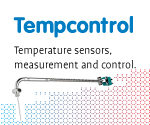The most commonly used resistance thermometer are made of platinum, the Platinum Resistance Thermometer (PRT). They are slowly replacing the use of thermocouples in many industrial applications below 600 °C, due to higher accuracy and repeatability and no need for a cold junction reference
Resistance thermometers are usually made using platinum, because of its linear resistance-temperature relationship and its chemical inertness. The platinum detecting wire needs to be kept free of contamination to remain stable. A platinum wire or film is supported on a former in such a way that it gets minimal differential expansion or other strains from its former, yet is reasonably resistant to vibration. RTD assemblies made from iron or copper are also used in some applications.
Advantages of platinum resistance thermometers:
- High accuracy
- Low drift
- Wide operating range
- Suitable for precision applications
Limitations:
- RTDs in industrial applications are rarely used above 660 °C. At temperatures above 660 °C it becomes increasingly difficult to prevent the platinum from becoming contaminated by impurities from the metal sheath of the thermometer. This is why laboratory standard thermometers replace the metal sheath with a glass construction. At very low temperatures, say below -270 °C (or 3 K), due to the fact that there are very few phonons, the resistance of an RTD is mainly determined by impurities and boundary scattering and thus basically independent of temperature. As a result, the sensitivity of the RTD is essentially zero and therefore not useful.
- Compared to thermistors, platinum RTDs are less sensitive to small temperature changes and have a slower response time. However, thermistors have a smaller temperature range and stability.
The common error sources of a PRT are:
- Interchange ability: the “closeness of agreement” between the specific PRT’s Resistance vs. Temperature relationship and a predefined Resistance vs. Temperature relationship, commonly defined by IEC 60751.
- Insulation Resistance: Error caused by the inability to measure the actual resistance of element. Current leaks into or out of the circuit through the sheath, between the element leads, or the elements.
- Stability: Ability to maintain R vs T over time as a result of thermal exposure.
- Repeatability: Ability to maintain R vs T under the same conditions after experiencing thermal cycling throughout a specified temperature range.
- Hysteresis: Change in the characteristics of the materials from which the RTD is built due to exposures to varying temperatures.
- Stem Conduction: Error that results from the PRT sheath conducting heat into or out of the process.
- Calibration/Interpolation: Errors that occur due to calibration uncertainty at the cal points, or between cal point due to propagation of uncertainty or curve fit errors.
- Lead Wire: Errors that occur because of the added resistance in the lead wires. This is greatly reduced by higher gauge wire. A 2 wire configuration: The wire connection adds lead resistance in series with PRT element. For a 3 wire configuration: The wire connection relies on all 3 leads having equal resistance.
- Self Heating: Error produced by the heating of the PRT element due to the power applied (<1 mA).
- Time Response: Errors are produced during temperature transients because the PRT cannot respond to changes fast enough.
- Thermal EMF: Thermal EMF errors are produced by the EMF adding to or subtracting from the applied sensing voltage, primarily in DC systems.
- The small signals from a Pt100 sensor lead to noise pickup problems similar to those encountered for thermocouples and the same precautions against pickup should be used.
- One final trap that often catches the unwary is the existence of two different compensation curves. The DIN 43760 standard, also called the ‘European Curve’, is 0.385 Ω/°C for a Pt100 sensor. However, there is also an ‘American Curve’ based on platinum wire of a higher purity (often used for reference standards), and this defines the temperature co-efficient as 0.392 Ω/°C. Of the two, the European curve is the more dominant (even in America) and most measurement instruments compensate for it. If however, the PRT has an American curve and the instrument is compensating for a European sensor, then a small error will result.
Carbon resistors
Carbon resistors are widely available and are very inexpensive. They have very reproducible results at low temperatures. They are the most reliable form at extremely low temperatures. They generally do not suffer from significant hysteresis or strain gauge effects.
